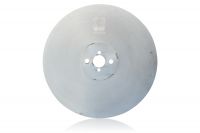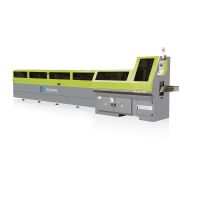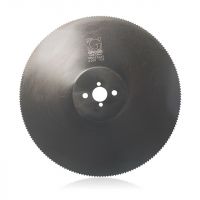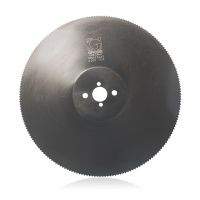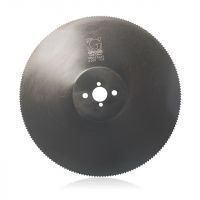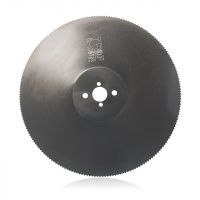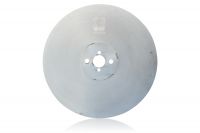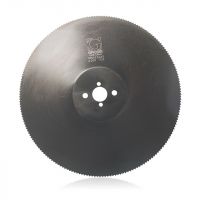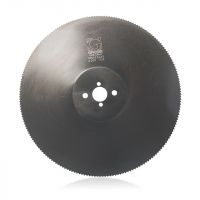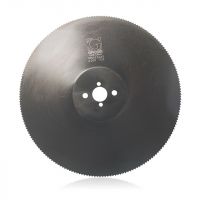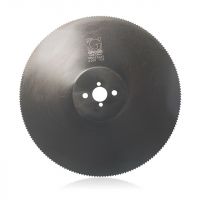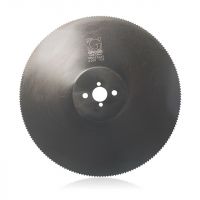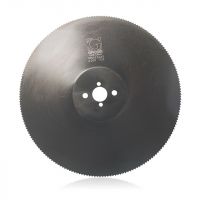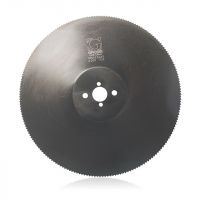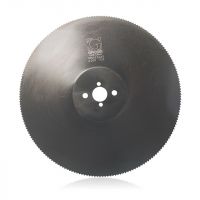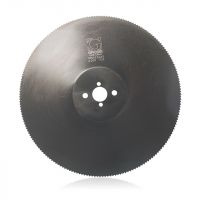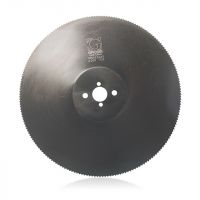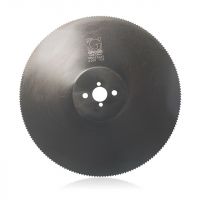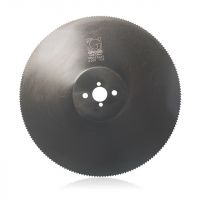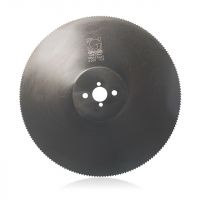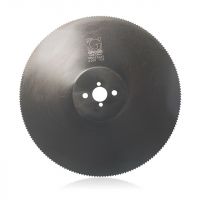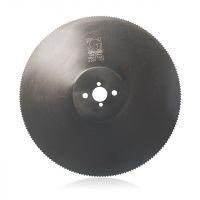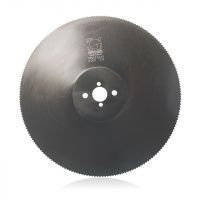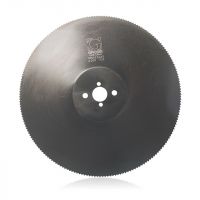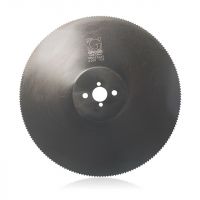A bit like tyres, coldsaw blades are pretty much black and round, right? Well, yes and no. There’s a surprising amount of technical stuff behind that plain face and if you want to get the maximum value from these tools, it pays to take some time to understand them. The name really does say it all – these tools are meant to stay cool and to avoid excess heat buildup in the workpiece too. They manage to do this by ensuring the heat from the cutting process is transferred to the chips, so running them as intended will keep them cutting better, cooler and longer.
Ensure that the blades are running in the cut with the side faces clear of the material. The blade disc is hollow ground so the cutting edge is wider than the body even as they're resharpened, allowing clearance so there is no friction to create heat. Evidence of pick-up on the blade or worn rings on the faces are sure signs that something is not right, don’t be tempted to just plough on through the problem, it will only cause more trouble because the blade won’t stay cool.
In some ways these tools do seem simple: almost all have a bore of either 32 or 40mm, they come with pin patterns to suit machines that use the particular bore, plus they’re almost always DMo5 HSS or Cobalt Steel and there aren’t that many surface coatings to choose from either. The basic black steam vapo coating is designed to spread and retain the coolant on the blade while in use and using good coolant at the correct concentration is essential. Coatings like TiN and TiAlN are usually applied to Cobalt blades, and while they do reduce friction by increasing the ‘slipperiness’ of the blade in the cut, they provide the most significant benefits only with harder materials. They're not a substitute for the cooling either, so don't skimp on the fluid just because the blade is all pretty colours.
Picking the ideal tooth pitch depends on several factors, but it’s best to keep in mind some rule-of-thumb guidance: For solid bar, look at using a pitch about 1.5 times the material thickness in millimetres and aim for between 3 & 6 teeth inside the cut. For tube, RHS, etc. start with about 1.5 times the COMBINED WALL thickness in millimetres, aiming for 1 to 2 teeth in the cut. These are guidelines only, and better results can sometimes be achieved with different settings. In NZ, the most commonly used pitch for coldsaws, and a good starting point for when it’s tricky to determine the ‘correct’ pitch, is around 4.5mm. Bear in mind though that thin-walled tube, brass, copper and aluminium will almost certainly benefit from having fewer teeth in the cut and using a higher blade speed.
The important thing to remember is that the heat is in the chips, so evacuating the chips efficiently is critical to keeping the blade healthy and happy. It’s obvious that too many teeth in the cut means the hot chips stay in contact with the blade for longer, transferring the heat into the disc, but using the correct tooth profile for the correct material is also important. These fairly simple looking profiles are optimised to produce the best chip shapes and move them away from the blade & material as efficiently as possible in different materials. So, coldsaws are technical tools made really simple, but they still need some TLC to get the best from them. We sharpen so many coldsaw blades it’s hard to count, but every one tells the story of how it ended up blunt or damaged* and many of them could have been avoided. Always keep them cool, try to use appropriate pitch and tooth profiles for the work material and keep an eye out for the clues that they’re not happy. Oh, and avoid using them for cutting angle iron, they really don’t like it.
Finish & Tolerance
If you need a perfectly accurate, almost milled finish quality it is hard to go past a coldsaw. That said, bandsaw accuracy has come a long way and a consistent 0.05mm tolerance is now pretty standard.
Cost Per Cut
Bandsaws easily win here, mostly down to the cost of the consumables, plus you use the bandsaw blade till it is dead and then biff it, whereas the coldsaw blade gets sharpened at a cost of approx. $30+, which is some added hassle. The bimetal blades used on bandsaws are usually a higher grade (M42) of steel than that used in a standard coldsaw blade (M2), and this gives them another advantage, as well as a lot more teeth to share the wear over.
Maintenance
We don’t consider either machine type to be high maintenance, but bandsaws are probably slightly higher – this is mainly due to the blade guides needing occasional refurbishment. Other than that, both coldsaws & bandsaws need regular cleaning and coolant changing. In summary, bandsaws far outsell coldsaws for good reason. However, coldsaws still have their place and are not likely to lose it in the foreseeable future.

